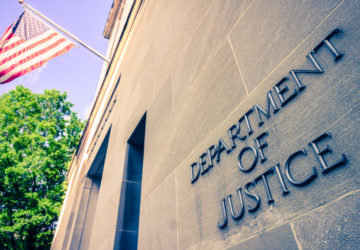We’re not the only ones asking why the Humane Society of the United States (HSUS) sat on its explosive slaughterhouse video for several months, while possibly tainted beef made its way into school lunchrooms. (To be fair, U.S. Agriculture Secretary Ed Schafer started the ball rolling.) Tuesday on Capitol Hill, members of the U.S. House Energy and Commerce Subcommittee on Oversight and Investigations had some hard questions for HSUS’s top vegan doctor, Michael Greger. And yesterday The New York Times, usually very friendly to HSUS, took notice in a not-too-flattering way.
HSUS’s well-deserved Congressional grilling left us with the distinct impression that the group was less interested in protecting the public’s health (or with the welfare of actual animals) than in timing its hit-job on meat producers for maximum political effect. This is hardly surprising, coming from a PETA-style organization whose lead farm-animal campaigner, Paul Shapiro, is on record saying that “nothing is more important than promoting veganism.”
And yesterday afternoon the other shoe dropped, as HSUS sued the Agriculture Department over the slaughter conditions depicted in its video. This is another outcome which wouldn’t have been as media-friendly had the animal rights group done the right thing and reported its findings on Day One.
To listen to Tuesday’s hearing, click here — and cue up a few places (listed below) for the relevant bits.
0:27:38 — In his opening statement, Rep. Michael C. Burgess (TX) said:
“I’m grateful the Humane Society brought this issue before us today, but I do have to wonder why they waited so long. The video was taped during the fall, in the month of October. And they knew that the meat was going to schoolchildren. So why wait until February to release the video?
“Now, the Humane Society has friends on the Hill. I count myself as one of those. I’ve worked with the Humane Society on the issue of horse slaughter back in my home state of Texas, working to effect the horse slaughter ban. So they have friends on the Hill. Why wait until now to bring this to our attention?”
1:11:10 – Subcommittee Chairman Bart Stupak (MI) asked Greger about the timeline:
Stupak: “If your investigator was at the plant in, I believe you said, the fall of 2007, why didn’t the Humane Society notify USDA’s School Lunch Program about what was happening in the plant before the end of January?”
Greger: “This investigation took over two months to complete. It was shot, he worked in the plant in October [and] November. We gave this evidence over to the local District Attorney’s office, the San Bernardino County District Attorney, and they asked us not to publicly release this information, to hold off so they could carry out their own criminal investigation into the animal cruelty that was witnessed. We complied with that request, but by January after a month had occurred we felt we had to go ahead and so we indeed contacted USDA and then made it public.”
So the D.A.’s office is to blame, right? Maybe.
1:31:43 — Rep. Greg Walden (OR) wasn’t satisfied:
Walden: “So the District Attorney of San Bernardino County told you ‘Don’t tell USDA there’s a food problem here’?”
Greger: “They told us to wait on any kind of public release of this information.”
Walden: “Is that different from notifying USDA?”
Greger: “Frankly, the reason we didn’t go to USDA first is because USDA has a history of not responding to…”
Walden: “But I want to get to the point here. So the District Attorney didn’t tell you not to go to USDA. They just said ‘Don’t make the video public.’ Is that right?”
[…]
Greger: “They asked us to hold on to the information while they completed their investigation.”
Walden: “Did they notify USDA?”
Greger: “I’m not aware.”
Walden: “Well, it just strikes me, here we’ve got the largest beef recall in American history, I think that’s correct, 143 million pounds, [USDA] Secretary Shafer obviously thought it was a big enough issue to recall it all, even though most of it now has been consumed. So while kids are eating this meat that may or may not be bad — certainly slaughter conditions were unacceptable and mostly illegal, I think, under USDA rules — nobody, so you didn’t tell USDA, the District Attorney didn’t tell USDA. So even if USDA has been bad in the past about doing recalls in a timely fashion, they didn’t even know, in this case … [and] in this case, you had, your Humane Society here or locally, had the video evidence, but that never got to USDA until January.”
Greger: “Until January.”




